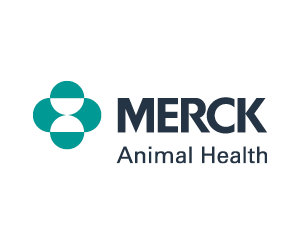Dietary therapy goals and management
The goals of dietary therapy are to optimize body weight with appropriate protein and carbohydrate levels, fat restriction, and calorie and portion control. Weight loss in obese patients and stopping DM-associated weight loss are treatment goals for diabetic canine and feline patients. The following approach is recommended for dietary management of DM:
- The cat or dog’s daily caloric requirements, based on lean body mass, should be calculated.
- Body weight (using the same scale) and BCS should be obtained at least once or twice monthly and adjustments made in dietary intake to maintain optimal weight.
- A weight loss goal in obese cats is 0.5–2% reduction per wk and in dogs is 1–2% reduction per wk.
- Managing protein and carbohydrate intake is recommended to minimize postprandial hyperglycemia.
- Dietary recommendations for both dogs and cats should be adjusted if concurrent diseases are present (e.g., chronic kidney disease, pancreatitis, intestinal disease).
Dietary management for cats
Diabetic cats should be fed a high-protein diet (defined as ≥40% protein metabolizable energy) to maximize metabolic rate, limit the risk of hepatic lipidosis during weight loss, improve satiety, and prevent lean muscle-mass loss.29 This dietary regimen is necessary to prevent protein malnutrition and loss of lean body mass. High-protein diets typically provide the lowest amount of carbohydrates without impacting palatability. The following dietary principles for diabetic cats should also be considered:
- Protein normalizes fat metabolism and provides a consistent energy source.
- Arginine stimulates insulin secretion.
- Carbohydrate intake should be limited because carbohydrates may contribute to hyperglycemia and glucose toxicity. The Task Force recommends a diet of approximately 12% ME, recognizing that there are a variety of expert opinions on this topic.24,29
- Diabetic cats have reported remission rates between 15 and 100% when given a combination of a high-protein/low-carbohydrate diet and insulin.4,5 The highest remission rates occur when glargine (Lantus) and detemir (Levemir) insulin are used in newly diagnosed (glargine) diabetics or those within 6 mo of diagnosis (both insulin forms).12
- High-fiber diets are not typically recommended for cats with DM.
Feeding portioned meals has several advantages for dietary management of diabetic cats:
- It is easier to monitor intake and appetite.
- Portion control is facilitated.
- Free-choice feeding is acceptable if a cat’s eating habits cannot be changed (the Task Force recommends that the daily ration be divided into multiple meals. The use of timed feeders may be helpful in this scenario).29
- Canned foods are preferred over dry foods. Canned foods provide:
- Lower carbohydrate levels.
- Ease of portion control.
- Lower caloric density; cats can eat a higher volume of canned food and obtain the same caloric intake as smaller volumes of dry food.
- Additional water intake.
Dietary management for dogs
For dogs, a diet that will correct obesity, optimize body weight, and minimize postprandial hyperglycemia is recommended. Unlike cats, dogs are not at appreciable risk for the clinical complications of hepatic lipidosis. Dogs with DM can do well with any diet that is complete and balanced, is fed at consistent times in consistent amounts, and is palatable in order to achieve predictable and consistent intake.
For dogs, diets that contain increased quantities of soluble and insoluble fiber or that are designed for weight maintenance in diabetics or for weight loss in obese diabetics can:
- Improve glycemic control by reducing postprandial hyperglycemia.
- Restrict caloric intake in obese dogs undergoing weight reduction.
Some clinicians recommend that owners supplement with canned pumpkin, green beans, or commercial fiber supplements containing psyllium or wheat dextrin. Additionally, regular and appropriate exercise should be considered an adjunct of any diet-based weight-loss program.
In underweight dogs, the principal goal of dietary therapy is to normalize body weight, increase muscle mass, and stabilize metabolism and insulin requirements. Underweight dogs should be fed a high-quality maintenance diet or a diabetic diet that has both soluble and insoluble fiber and is not designed for weight loss. The diet should be palatable in order to provide predictable caloric intake when fed at consistent times and in consistent amounts. Owners should include treats when calculating daily caloric intake.





